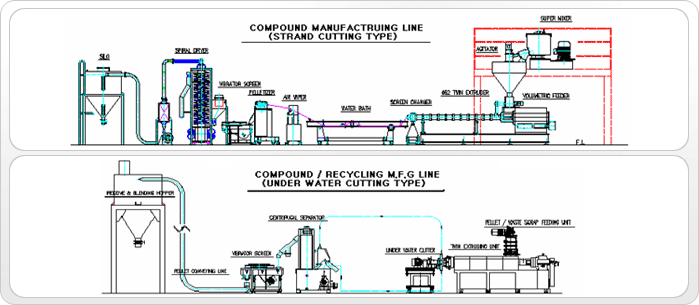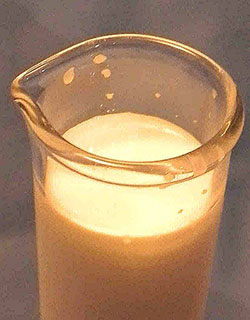 Thermal degradation of polymers is molecular deterioration as a result of overheating. At high temperatures the components of the long chain backbone of the polymer can begin to separate (molecular scission) and react with one another to change the properties of the polymer. Thermal degradation can present an upper limit to the service temperature of plastics as much as the possibility of mechanical property loss. Indeed unless correctly prevented, significant thermal degradation can occur at temperatures much lower than those at which mechanical failure is likely to occur. The chemical reactions involved in thermal degradation lead to physical and optical property changes relative to the initially specified properties. Thermal degradation generally involves changes to the molecular weight (and molecular weight distribution) of the polymer and typical property changes include reduced ductility and embrittlement, chalking, color changes, cracking, general reduction in most other desirable physical properties.
Thermal degradation of polymers is molecular deterioration as a result of overheating. At high temperatures the components of the long chain backbone of the polymer can begin to separate (molecular scission) and react with one another to change the properties of the polymer. Thermal degradation can present an upper limit to the service temperature of plastics as much as the possibility of mechanical property loss. Indeed unless correctly prevented, significant thermal degradation can occur at temperatures much lower than those at which mechanical failure is likely to occur. The chemical reactions involved in thermal degradation lead to physical and optical property changes relative to the initially specified properties. Thermal degradation generally involves changes to the molecular weight (and molecular weight distribution) of the polymer and typical property changes include reduced ductility and embrittlement, chalking, color changes, cracking, general reduction in most other desirable physical properties.
The mechanism of thermal degradation
Most types of degradation follow a similar basic pattern. The conventional model for thermal degradation is that of an auto-oxidation process which involves the major steps of initiation, propagation, branching, and termination.
Initiation
The initiation of thermal degradation involves the loss of a hydrogen atom from the polymer chain as a result of energy input from heat or light. This creates a highly reactive and unstable polymer ‘free radical’ (R•) and a hydrogen atom with an unpaired electron (H•).
Propagation
The propagation of thermal degradation can involve a variety of reactions and one of these is where the free radical (R•) reacts with an oxygen (O2) molecule to form a peroxy radical (ROO•) which can then remove a hydrogen atom from another polymer chain to form a hydroperoxide (ROOH) and so regenerate the free radical (R•). The hydroperoxide can then split into two new free radicals, (RO•) + (•OH), which will continue to propagate the reaction to other polymer molecules. The process can therefore accelerate depending on how easy it is to remove the hydrogen from the polymer chain.
Termination
The termination of thermal degradation is achieved by ‘mopping up’ the free radicals to create inert products. This can occur naturally by combining free radicals or it can be assisted by using stabilizers in the plastic.






 An adhesive is any substance that, when applied to the surfaces of materials, binds the surfaces together and resists separation. The term "adhesive" may be used interchangeably with glue, cement, mucilage, or paste. Adjectives may be used in conjunction with the word “adhesive” to describe properties based on the substance's physical form, its chemical form, the type of materials it is used to join, or the conditions under which it is applied.
An adhesive is any substance that, when applied to the surfaces of materials, binds the surfaces together and resists separation. The term "adhesive" may be used interchangeably with glue, cement, mucilage, or paste. Adjectives may be used in conjunction with the word “adhesive” to describe properties based on the substance's physical form, its chemical form, the type of materials it is used to join, or the conditions under which it is applied. A heteropolymer or copolymer is a polymer derived from two (or more) monomeric species, as opposed to a homopolymer where only one monomer is used. Copolymerization refers to methods used to chemically synthesize a copolymer.
A heteropolymer or copolymer is a polymer derived from two (or more) monomeric species, as opposed to a homopolymer where only one monomer is used. Copolymerization refers to methods used to chemically synthesize a copolymer.


